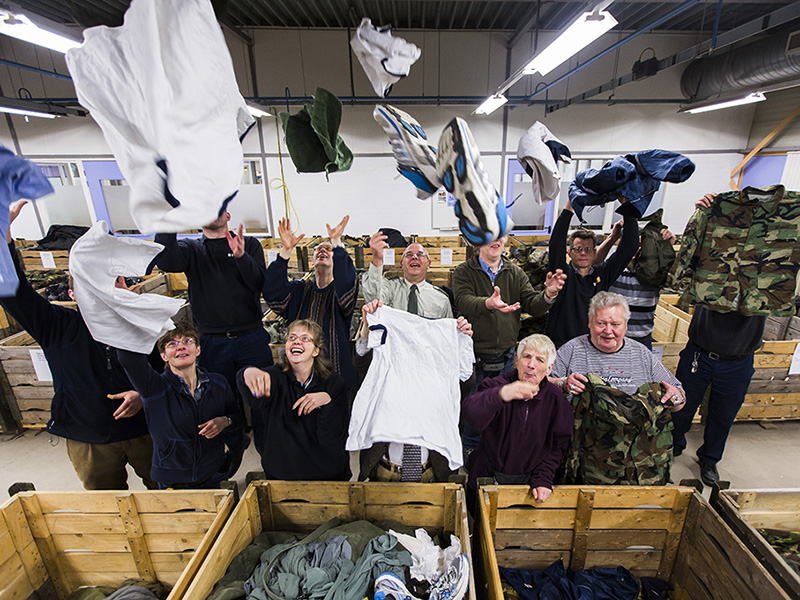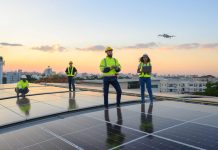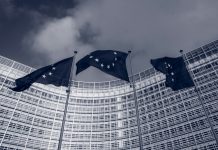
by Khaled Soufani, Terence Tse, Mark Esposito, Giorgos Dimitriou and Panayotis Kikiras
A holistic approach to circular economy is the one that merges the mission-driven approaches of CSR, social enterprise, and social entrepreneurship with the ecological potential of circular economy for social good. This can be done through social enterprise partnerships. As an example, this article presents the case of the Dutch Ministry of Defence (MoD) and a local social enterprise known as Biga Groep (Biga Group) in terms of how they work harmoniously to put circular economy initiatives into fruition.
Nearly fifty years after Milton Friedman famously wrote “There is one and only one social responsibility of business – to use its resources and engage in activities designed to increase its profits”, society has come a long way. We’ve gone from academics espousing maximisation of shareholder value to benevolent schools of thought that dominated the literature between 2005 and 2011, such as corporate social responsibility (CSR), social entrepreneurship, social enterprise (Yunus, 2009), shared value (Porter & Kramer, 2011), and even the B corporation. CSR focusses on the corporation as the actor and the contributions the corporation makes to society outside of its business functions. Shared value, B corporations, social entrepreneurship and social enterprise focus on market-driven, business-oriented schemes toward solving a social problem. These concepts all share one thing in common: they focus on bettering the general welfare of society, which is to say, people.
In more recent years, as more climate research has been published, the conversation has taken on an environmental emphasis. Older schools of thought that began in the late eighties and nineties, such as natural capitalism (Lovins, Lovins, & Hawken, 1999), cradle to cradle (McDonough & Braungart, 2002), biomimicry (Benyus, 1997), and circular economy (Pearce & Turner, 1989) have all come back into focus, none more impressively than the circular economy, thanks to the major work of the Ellen MacArthur Foundation and McKinsey & Company. While many think of these sustainability paradigms as doing more with less, the circular economy is also recuperative. In terms of sustainability, it would be insufficient to say that the circular economy is environmentally friendly. While that may be one of its characteristics, the distinctive feature of circular economy is its objective of maximising what is already in use along all points of a product’s lifecycle, from sourcing, to supply chain to consumption. Remaining unusable parts for one function are reallocated as a new source for another purpose. In this way, primary materials used in construction, car and electronics manufacturing, synthetic fertilisers and pesticides, fuel and non-renewable energy, and land use, among others, can be replaced with recovered and repurposed materials in cascaded use, a top-down approach to using and reusing materials.
Circular economy research is timely. As global consumerism continues to expand and better methods of capturing data are available, we are learning that there are some serious problems with the way we do business as a species. For instance, it is estimated that, in Europe, 90 percent of raw materials used in manufacturing become waste before the product ever even leaves the factory, while 80 percent of products made are thrown away in the first six months of their existence (Girling, 2005). So the circular economy gives us hope of doing better. It has been estimated to have the potential to reduce consumption of new materials by 32 percent within fifteen years, and by 53 percent by 2050 (Ellen MacArthur Foundation and McKinsey Center for Business and Environment, 2015). While the literature on the circular economy does underscore job creation as a positive externality, it is typically discussed in the context of an overall social benefit based on the creation of new circular economy industries, such as renewable energy. Social issues such as homelessness and underprivileged groups, areas that social entrepreneurship and social enterprise address, are not an area of focus in the circular economy literature. Areas of convergence between social enterprise and circular economy have thus far been highlighted far too little.
[ms-protect-content id=”9932″]This article aims to address this gap in the literature through the presentation of the case of the Dutch Ministry of Defence (MoD) and a local social enterprise known as Biga Groep (Biga Group). It demonstrates a harmonious relationship between an organisation in the government’s defence that utilises a circular economy model and a social enterprise. The aim is to drive home a few points: first, an organisation cannot be self-reliant when it comes to circular economy. Partners in other sectors are needed if use-value of materials are to be maximised. Second, the circular economy model is capable of accomplishing even more than resource efficiency when it comes to the social well-being of a society. In the detailed study below, the MoD and Biga Groep jointly pursue not just sustainability and environmental protection but also social benefits. Together, their experience and practices can potentially serve as a reference guide or even a template for other organisations.
In the Netherlands, the Dutch Ministry of Defence (MoD) and, more specifically, Kleding en Persoonsgebonden Uitrustingsbedrijf (clothing and personal equipment company, or KPU) within MoD’s Defence Materiel Organisation, together with Category Management, the central procurement function of the government of the Netherlands, uses circular principles to cut down on wasted material and extend the service life of uniforms, helmets, and other personal equipment for the navy, army, air force, and military police. In the words of Lieutenant Colonel Rob van Arnhem, Project Officer Workwear, “The intention of the Circular Economy is to combat waste. Defence supplies a lot of goods, and when we collect them, we either try to give them a second life, or we use the materials for new products” (Defensie Materieel Organisatie, 2016). This is perhaps not a surprise given that the Netherlands as a country is at the forefront of circular economy: not only are many of its private businesses pioneers in this field, but the government has recently declared its intention to achieve a 100 percent circular economy at the national level by 2050.
In 2017, the KPU had 60,000 customers and approximately 2,000 different stock keeping units (Kleding en Persoonsgebonden Uitrustingsbedrijf, 2017). Each year, about 500,000 orders are sent out to various personnel and another 13,000 personnel come to KPU for clothing and special uniforms, including mission-specific desert suits. Prior to the utilisation of a circular method, new items were distributed and used workwear and personal equipment would be turned in and incinerated. This is no longer the case. As ordinary as it sounds, the impact of sustaining such workwear cannot be underestimated, because clothing production takes a serious toll on not just resources, but also the environment as a whole. According to data provided by the Defence Materiel Organisation (2017), production of four T-shirts or one pair of jeans would require the use of 2.5kg of pesticides as well as 10,000 litres of water. Not only this, but it takes an average of 100 litres of water to dye just 1 kg of textiles. Additionally, 6,500 billion litres of heavily polluted water is created and discarded by the textile industry every year. By some estimates, the textile industry alone accounts for 25 percent of overall water pollution globally. On top of this, social side effects are also evident: at the production cost of just €1.50 for a T-shirt, labourers in low wage countries are paid very little and often work in harsh conditions.
Based on these statistics, it is clear that minimising the use of resources for the production of textiles and fabrics is a key to a more sustainable future, and reusing and recycling textiles provides a much bigger scope for environmental protection than other sustainability initiatives. It therefore made a great deal of sense to Mireille Hendricks-de Jorge, contract manager for Category Management, to explore ways to reduce the need for new uniforms:
Beyond the environmental effects, there was also the practical matter of budgets. The practice of burning materials and buying replacement uniforms was actually costing the Netherlands approximately €500,000 per year (Defensie Materieel Organisatie, 2016) to destroy materials that still had value in them. As a result, the MoD implemented circularity methods to recycle and reuse more of the retrieved uniforms and materials. Today, items that are in nearly new condition are washed and kept, and KPU runs a special facility to perform basic repairs, such as loose stitching or missing buckles. It also has a shoe repair shop to lengthen the lifespan of boots and reduce new footwear purchases. Shoes, gas masks and bags are readily reused. Because the MoD cannot take on the additional industrial activities needed to process the used uniforms and equipment, it became obvious that setting up collaborations with the private sector was the best solution. Whereas KPU distributes uniforms and personal articles to military personnel, Big Groep is now responsible for processing the old, used items.
Located near Utrecht, Biga Groep is a social enterprise that provides jobs to disadvantaged people, such as recently arrived immigrants and people with occupational disabilities. For immigrants, Biga Groep also provides lessons in Dutch language to help them integrate into the community. After years of cooperation between the company and KPU, the Netherlands MoD has now become Biga Groep’s biggest customer. The income generated from the MoD alone is sufficient to provide full-time jobs to 54 individuals who would otherwise struggle to find work. The use of such a labour force, however, does not mean the quality is compromised. On the contrary, the employees at Biga Groep have consistently demonstrated a high-quality standard in their work as well as reliability. Biga Groep and the MoD recently renewed their contract for eight years, which will provide Biga Groep with stable income, making it easier for them to create new positions and hire more people from disadvantageous backgrounds. The stories of the individuals have also profoundly affected the way KPU views their assets and what more they can do to prevent waste. Hendricks-de Jorge reflected, “The people at Biga Groep are actually encouraging KPU to reuse more. Many of them are on low income and those people with a very low income usually cannot afford really high quality clothes themselves. At the same time, we [the KPU] are throwing away high quality, expensive clothing. We are trashing a pair of socks that go with combat boots and these socks cost €30 a pair and are in good condition. I seriously cannot explain that to the people at Big Groep and I am stuck with a dilemma that actually made us see that you can take more back. Of course, if the socks are worn out, then we’d throw them away, but it makes us think about taking back everything that’s still good” (2017).
Since the partnership began, about 35 percent of the items retrieved and sent to Biga Groep got a second life (Defensie Materieel Organisatie, 2016), with Biga Groep as the starting point. The organisation prepares some 750,000 uniform items for reuse and resale (Defensie Materieel Organisatie, 2016). Employees first check pockets to return forgotten items to their owners and sort items for different destinations. Remaining uniforms that have seen a lot of use and unfit for refurbishment are shredded by hand using electric scissors, since the Biga Groep don’t have industrial shredders. The resulting pieces are then categorised according to their constituent parts – for instance, material with 50 percent cotton and 50 percent polyester is bundled separately from materials made of 70 percent polyester and 30 percent cotton – and sold as fibres and materials to the private sector at €70 per box of materials (Defensie Materieel Organisatie, 2016). Two thousand four hundred boxes were sold in the first year, meaning that KPU went from spending money to dispose of old uniforms to generating income from them. One consumer of the shredded fibres is the Salvation Army, who has an agreement with the MoD. In another socially minded move, the MoD’s agreement makes it possible for the Salvation Army to convert recycled fabric into blankets for refugees in the Mediterranean.
The gains for both the MoD and the Biga Groep continue beyond helping refugees and benefiting from the income derived from shredded uniforms. In a bid to build more business with the MoD, Biga Groep proposed to refit helmets so that they could be sent back for redeployment more quickly. Prior to the partnership, helmets were sent back to their manufacturer in Spain. Now Biga Groep does most of the reconditioning, which often means replacing damaged plastic parts and worn leather linings. Thanks to Biga Groep, the MoD now has quicker access to a steady supply of helmets and no longer loses time or storage space while waiting on collection for dispatch to Spain. Moreover, instead of sending helmets over country borders, renewed helmets are now only seven kilometres away. Through thoughtful thinking, the Biga Groep helped the MoD find new ways of keeping their equipment in use longer, access them more efficiently, and save on inventory and transportation costs.
Since then, they have come up with even more ways of creating value. They now assemble starter kits for new soldiers since they effectively have all the items to be issued to new personnel readily available through their operations. By reusing and repairing instead of buying from new, even with the cost of operations at Biga Groep already deducted, the MoD saves €8-10 million annually (M. Stoop, personal communication, July 12, 2017), and income for the first year of shredded fabric was approximately €168,000 in sales. These financial gains, in addition to the efficiency gains the MoD receives from refurbished uniforms and helmets, are made possible through their relationship with Biga Groep.
As seen in the case here with the MoD and Biga Groep, the circular economy can be built with social enterprise partnerships to work together to address both environmental and social problems at once. The circular economy is an innovative economic model that rethinks production and consumption across the entire chain in order to use as few resources as possible for as long as possible. It has much promise and potential that should portend good news for the environment and for businesses. But behind all the enthusiasm for the environmental, efficiency, and economic benefits that circular economy offers, it must be remembered that we have not yet fixed the problems of yesteryear. The social issues that drove the business theories around corporate responsibility and social innovation are still prevalent and widespread. Now is the time to merge the mission-driven approaches of CSR, social enterprise, and social entrepreneurship with the ecological potential of circular economy for social good.
[/ms-protect-content]About the Authors
 Dr. Khaled Soufani is Professor of Management Practice (Economics) and Director of the Executive MBA in the Judge Business School at the University of Cambridge, where he also directs the Executive MBA and the Circular Economy Center. He has published extensively in the area of financial management and economic affairs of small and medium-sized enterprises. His current research interests relate to fast-expanding markets and the economics of innovation.
Dr. Khaled Soufani is Professor of Management Practice (Economics) and Director of the Executive MBA in the Judge Business School at the University of Cambridge, where he also directs the Executive MBA and the Circular Economy Center. He has published extensively in the area of financial management and economic affairs of small and medium-sized enterprises. His current research interests relate to fast-expanding markets and the economics of innovation.
 Dr. Terence Tse is an Associate Professor at ESCP Europe London campus and a Research Fellow at the Judge Business School in the UK. He is also head of Competitiveness Studies at i7 Institute for Innovation and Competitiveness. Terence has also worked as a consultant for Ernst & Young, and served as an independent consultant to a number of companies. Hee has published extensively on various topic of interests in academic publications and newspapers around the world. He has been interviewed by television channels including CCTV, Channel 2 of Greece, France 24, and NHK.
Dr. Terence Tse is an Associate Professor at ESCP Europe London campus and a Research Fellow at the Judge Business School in the UK. He is also head of Competitiveness Studies at i7 Institute for Innovation and Competitiveness. Terence has also worked as a consultant for Ernst & Young, and served as an independent consultant to a number of companies. Hee has published extensively on various topic of interests in academic publications and newspapers around the world. He has been interviewed by television channels including CCTV, Channel 2 of Greece, France 24, and NHK.
 Dr. Mark Esposito, PhD., is a Socio-Economic Strategist and bestselling author, researching MegaTrends, Business Model Innovations and Competitiveness. He works at the interface between Business, Technology and Government and co-founded Nexus FrontierTech, an Artificial Intelligence Studio. He holds appointments as Professor of Business and Economics at Hult International Business School and he is equally a faculty member at Harvard University since 2011. Mark is an affiliated faculty of the Microeconomics of Competitiveness (MoC) network at Harvard Business School’s Institute for Strategy and Competitiveness and is currently co-leader of the network’s Institutes Council.
Dr. Mark Esposito, PhD., is a Socio-Economic Strategist and bestselling author, researching MegaTrends, Business Model Innovations and Competitiveness. He works at the interface between Business, Technology and Government and co-founded Nexus FrontierTech, an Artificial Intelligence Studio. He holds appointments as Professor of Business and Economics at Hult International Business School and he is equally a faculty member at Harvard University since 2011. Mark is an affiliated faculty of the Microeconomics of Competitiveness (MoC) network at Harvard Business School’s Institute for Strategy and Competitiveness and is currently co-leader of the network’s Institutes Council.
 Giorgos Dimitriou is the Research and Technology Projects portfolio coordinator at the European Defence Agency overseeing a portfolio of numerous international projects and leading the research on Circular Economy in the defense sector. He has worked for more than fourteen years in the European Public Service, and has authored, co-authored and coordinated numerous reports published at the EU level. He is an acknowledged contributor to the Global Risk 2013 report commissioned by the World Economic Forum as well as to a report carried out in collaboration with Harvard University and the European Parliament on a novel intervention to address the European Financial Crisis.
Giorgos Dimitriou is the Research and Technology Projects portfolio coordinator at the European Defence Agency overseeing a portfolio of numerous international projects and leading the research on Circular Economy in the defense sector. He has worked for more than fourteen years in the European Public Service, and has authored, co-authored and coordinated numerous reports published at the EU level. He is an acknowledged contributor to the Global Risk 2013 report commissioned by the World Economic Forum as well as to a report carried out in collaboration with Harvard University and the European Parliament on a novel intervention to address the European Financial Crisis.
 Dr. Panayotis Kikiras is currently Head of Unit Innovative Research in European Defense Agency in Brussels. Through its work on innovative research the directorate supports EDA Member States in their efforts to cooperate, promote and manage cooperative Research and Technology projects. It identifies dual-use synergies and opportunities with the European Commission and the European Space Agency to enhance civil-military cooperation, interoperability and effective R&T spending. Panayotis before EDA, has been working for AGT International since 2011. He was Vice President of Research leading the enabling technologies research group which conducts research in the areas of Cyber Security, Big Data and Energy Analytics. He holds a PhD and an MSc in Computer and Electrical Engineering from the Technical University of Athens and an MSc in Management and Economics of Communication Networks from the University of Athens.
Dr. Panayotis Kikiras is currently Head of Unit Innovative Research in European Defense Agency in Brussels. Through its work on innovative research the directorate supports EDA Member States in their efforts to cooperate, promote and manage cooperative Research and Technology projects. It identifies dual-use synergies and opportunities with the European Commission and the European Space Agency to enhance civil-military cooperation, interoperability and effective R&T spending. Panayotis before EDA, has been working for AGT International since 2011. He was Vice President of Research leading the enabling technologies research group which conducts research in the areas of Cyber Security, Big Data and Energy Analytics. He holds a PhD and an MSc in Computer and Electrical Engineering from the Technical University of Athens and an MSc in Management and Economics of Communication Networks from the University of Athens.
References
1. Antikainen, M., & Valkokari, A. (2016). A framework for sustainable circular business model innovation. Technology Innovation Management Review 6(7), 5–12.
2. Assembly of European Regions. Focus on the Circulr Economy. Retrieved from http://aer.eu/one-month-apply-regional-innovation-award/
3. Bastein, T., Roelofs, E., Rietveld, E., & Hoogendoorn, A. (2013). Opportunities for a circular economy in the Netherlands. TNO.
4. Benyus, J. (1997). Biomimicry. New York, NY: HarperCollins.
5. Bruls, E. (June 2017). Untitled. Presentation, Rijkswaterstaat.
6. Dagbladet, S. (2016). Regeringens dilemma: Skrota Gripen eller ta miljardnota. Retrieved from https://www.svd.se/regeringens-dilemma-skrota-gripen-eller-ta-miljardnota
7. Defensie Materieel Organisatie. (2016, May 3). MVO bij Defensie, Engelse versie (MVO in defence, English version) [Video file]. Retrieved from https://www.youtube.com/watch?v=1nhVKqTGBPo
8. Defence Materiel Organisation, Ministry of Defence. (June 2017). Circular procurement & category management: changing the industry together.
9. Ellen MacArthur Foundation & the McKinsey Center for Business and Environment. (2015). Growth within: A circular economy vision for a competitive Europe. Foundation for Environmental Economics and Sustainability (SUN [Stiftungsfonds für Umweltökonomie] und Nachhaltigkeit GmbH).
10. European Environment Agency. (2012). Towards efficient use of water resources in Europe. Retrieved from https://www.eea.europa.eu/publications/towards-efficient-use-of-water
11. European Commission. (2015). Circular economy and the role of eco-innovation. http://ec.europa.eu/environment/ecoap/about-eco-innovation/policies-matters/eu/circular-economy-ecoinnovation_en
12. Gallaud, D., & Laperche, B. (2016). Circular economy, industrial ecology and short supply. New Jersey: Wiley.
13. Girling, R. (2005). Rubbish!: Dirt on our hands and crisis ahead. London:Transworld Publishers Limited.
14. Hendricks-de Jorge, M. (June 2012). Untitled. Presentation, Category Management, Kleding en Persoonsgebonden Uitrustingsbedrijf.
15. Katainen, J. (2016). Circular economy matters. European Defence Matters 11.
16. Kleding en Persoonsgebonden Uitrustingsbedrijf. (June 2017). Circular Economy in the Dutch Military. Presentation. Kleding en Persoonsgebonden Uitrustingsbedrijf.
17. Lacy, P., & Rutqvist, J. (2015). Waste to wealth: The circular economy advantage. United Kingdom: Palgrave Macmillan.
18. Hawken, P., Lovins, A. B., & Lovins, L. H. (1999). Natural Capitalism. Boston, MA: Little, Brown & Company.
19. McDonough, W. & Braungart, M. (2002). Cradle to Cradle: Remaking the Way We Make Things. New York, NY: Farrar, Straus and Giroux.
20. Mentink, B. (2014). Circular business model innovation: A process framework and a tool for business model innovation in a circular economy. Netherlands: Delft University of Technology and Leiden University.
21. McKinsey Global Institute. (2017). Beyond the Supercycle: How technology is reshaping resources. Retrieved from https://www.mckinsey.com/~/media/McKinsey/Business%20Functions/Sustainability%20and%20Resource%20Productivity/Our%20Insights/How%20technology%20is%20reshaping%20supply%20and%20demand%20for%20natural%20resources/MGI-Beyond-the-Supercycle-Full-report.ashx
22. Pearce D. & Turner, R. K. (1989). Economics of Natural Resources and the Environment. Baltimore, MD: Johns Hopkins University Press.
23. Porter, M. E. & Kramer, M. R. (2011). Creating shared value. Harvard Business Review (January-February), 63–70.
24. Schelmetic, T. (March 29, 2017). NASA projects advance technology for additive manufacturing in space. Design News. Retrieved from https://www.designnews.com/materials-assembly/nasa – projects-advance-technology-additive-manufacturing-space/111729844756546
25. Sempels, C. (2014). Implementing a circular and performance economy through business model innovation. In E. M. Foundation (Ed.), A New Dynamic. Effective Business in a Circular Economy. United Kingdom: Ellen MacArthur Foundation Publishing.
26. Stahel, W. R. (2013). The business angle of a circular economy – Higher competitiveness, higher resource security and material efficiency. A New Dynamic: Effective Business in a Circular Economy. Ellen MacArthur Foundation.
27. Stoop, M. (June 2012). Untitled. Presentation, Kleding en Persoonsgebonden Uitrustingsbedrijf.
28. World Economic Forum. (January 2014). Towards the Circular Economy: Accelerating the scale-up across global supply chains. Report. Retrieved from http://www3.weforum.org/docs/WEF_ENV_TowardsCircularEconomy_Report_2014.pdf.
29. Yunus, M. Banker to the Poor. (1999). New York, NY: Public Affairs.



































